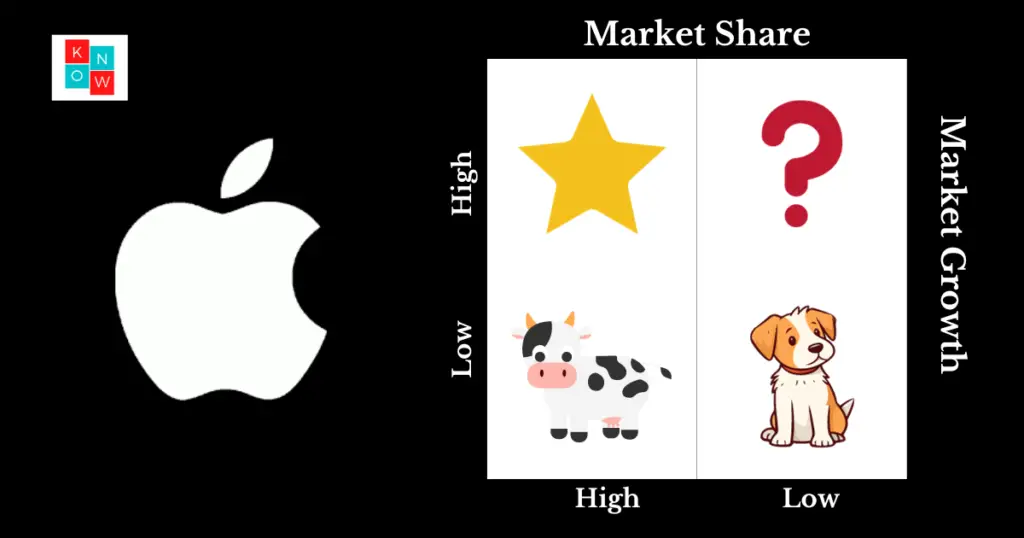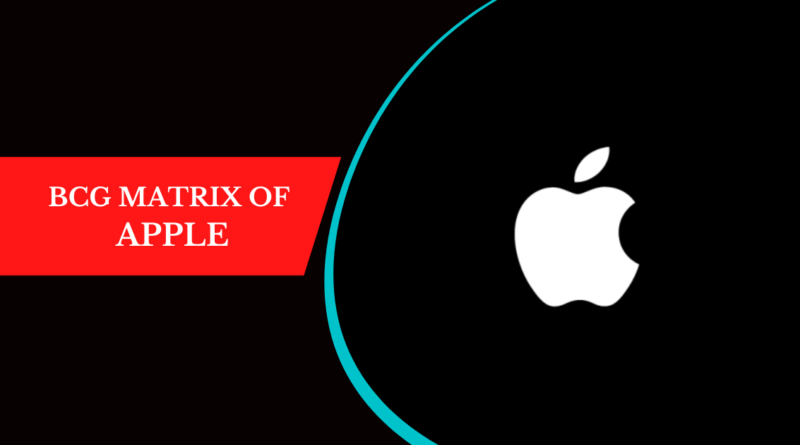Analyzing Apple’s Product Portfolio using the BCG Matrix
In today’s rapidly evolving technology landscape, Apple Inc. has managed to establish itself as one of the most valuable and innovative companies in the world. With a diverse range of products and services, Apple’s success can be attributed to its strategic management of its product portfolio. In this blog post, we will explore Apple’s product portfolio using the BCG Matrix, a popular strategic management tool that helps businesses analyze their product offerings.

The BCG Matrix Overview
The BCG Matrix, developed by the Boston Consulting Group, is a matrix-based tool that categorizes a company’s products into four quadrants: Stars, Cash Cows, Question Marks, and Dogs. These quadrants are based on the product’s growth rate and market share, allowing businesses to evaluate the performance and potential of each product in their portfolio.
Apple's Product Portfolio
Apple’s product portfolio consists of a diverse range of products, including the iPhone, iPad, Mac, Apple Watch, and various software and services. Let’s examine how these products fit into the BCG Matrix.

Stars
The iPhone can be considered a star product for Apple, as it has a high market share and continues to experience significant growth. Despite intense competition, Apple has managed to maintain its dominance in the smartphone market.
Cash Cows
The Mac line of computers and the App Store fall into the cash cow category. These products have a large market share and generate substantial profits for Apple. They have a stable position in the market and require minimal investment for further growth.
Question Marks
The Apple Watch and Apple TV fall into this category. While they have the potential for growth, their market share is not as dominant as other Apple products. Apple continues to invest in these products to increase their market presence and profitability.
Dogs
Apple does not have any products that can be classified as dogs, which are products with low market share and low growth potential.
Strategic Implications
Analyzing Apple’s product portfolio using the BCG Matrix provides valuable insights for strategic decision-making. Apple’s strengths lie in its star and cash cow products, such as the iPhone and Mac, which generate substantial profits and maintain a strong market position. These products require ongoing investment to sustain growth and innovation.
Question mark products, like the Apple Watch and Apple TV, offer potential growth opportunities, but they also require strategic decision-making to capture market share and maximize profitability. Apple must carefully assess market trends and consumer demand to make informed investment decisions in these product categories.
Conclusion
The BCG Matrix provides a framework for analyzing Apple’s product portfolio and making strategic decisions. By categorizing products into stars, cash cows, question marks, and dogs, Apple can identify areas of strength and potential growth. This analysis helps Apple allocate resources effectively and prioritize investment in its product offerings.
Apple’s success can be attributed to its ability to maintain a strong market position with products like the iPhone and Mac, while also investing in newer products, such as the Apple Watch and Apple TV, to capture future market opportunities. By using the BCG Matrix as a strategic management tool, Apple continues to innovate and dominate the technology industry.
In conclusion, the BCG Matrix analysis of Apple’s product portfolio highlights the company’s strategic focus on maintaining a balanced mix of market-leading products and investing in emerging opportunities.




